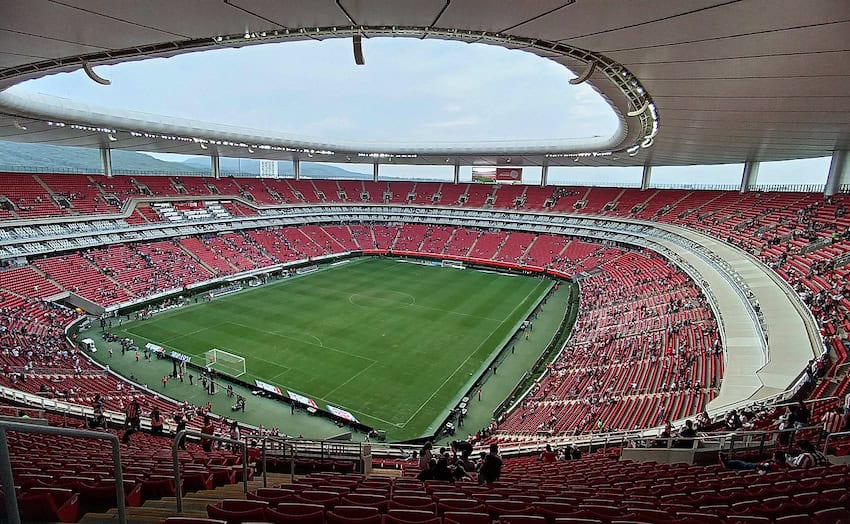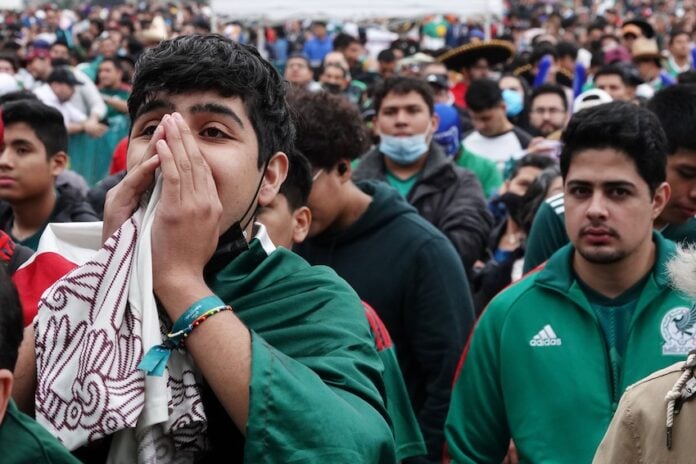When Guadalajara last hosted a FIFA World Cup, Diego Maradona still ruled the pitch. That was 1986, a lifetime ago in the life of Jalisco’s capital. Nearly 40 years later, the city is preparing once again to take its place on the global stage, this time as part of the largest World Cup in history.
From June 11 to July 19, 2026, 48 teams will play 104 matches across the United States, Canada and Mexico. Guadalajara will host four of those matches at Estadio Akron, including one featuring Mexico’s own national team. For the first time, “El Tri” will play a World Cup game on Jalisco soil, and local pride is running high.
Guadalajara to host 2026 FIFA World Cup matches

Guadalajara’s connection to soccer runs deep. The city was a host venue for the 1970 and 1986 World Cups and has long been one of Mexico’s football capitals, home to the legendary Club Deportivo Guadalajara (Chivas) and Atlas FC. Estadio Akron, located in the Zapopan suburb, has already seen international action. It was a major venue for the 2011 Pan American Games and the FIFA U-17 World Cup.
The stadium will once again take center stage on June 11, 18, 23 and 26, 2026, when tens of thousands of fans are expected to fill its 48,000 seats. But the preparations taking shape across Jalisco go well beyond the matches themselves.
Less than a year before kickoff, Governor Pablo Lemus Navarro met with President Claudia Sheinbaum Pardo in Mexico City to present an ambitious slate of projects designed to strengthen Jalisco’s role. The meeting focused on investment across infrastructure, mobility, security, hospitality and culture. The state projects that more than 2.5 million visitors will arrive in Jalisco during the World Cup, a major boost for the local economy and a chance to showcase the state’s tourism identity on a global scale.
Infrastructure upgrades and other World Cup preparations are underway
Central to that transformation is a 2.5 billion peso rehabilitation of the Chapala Highway, the key artery connecting Guadalajara International Airport with the metropolitan area. The project includes new lanes, improved lighting, and modernized public transport access. Plans for the city’s future Line 5 metro are tied to the same corridor.
The Guadalajara International Airport is also expanding, part of a broader upgrade of Mexico’s major air gateways. With more international flights expected from North America, the airport’s capacity, security and customs facilities are being scaled up to handle the expected surge in passenger traffic.
Security remains another pillar of the state’s preparations. The modernization of the C5 Escudo Jalisco surveillance system, a network of cameras and control centers, is underway to monitor key areas during the tournament.
Jalisco is readying its destinations and hotel rooms

Jalisco already offers around 83,000 hotel rooms, but another 38 hotels are in development with an estimated investment of 20 billion pesos. These new properties will be spread across Guadalajara, Puerto Vallarta, Costalegre, Tapalpa and Autlán. To support sustainable growth, Jalisco is offering incentives for hotels that adopt green building practices, like reusable water systems and renewable energy. The state is launching hospitality academies in Guadalajara and Puerto Vallarta to help train and certify hospitality staff, from front desk to housekeepers, and everyone in between.
Puerto Vallarta, in particular, is expected to see indirect benefits. Many visitors will likely split their time between Guadalajara and the coast, combining matches with beach escapes. The state’s Pacific destinations are already popular among international travelers, and additional air routes and resort investments are expected to enhance that draw.
State cultural assets will be displayed for visitors
Jalisco’s preparations aren’t all about roads and rooms. The state is leaning heavily on its cultural assets to make the World Cup a celebration of identity. In Guadalajara’s historic center, a World Cup Fan Festival will transform the plazas into a hub of music, art and gastronomy, featuring mariachi performances, charreadas and regional cuisine.
Beyond the capital, the state’s 12 Pueblos Magicos, including Tapalpa, Mazamitla, Lagos de Moreno and Tequila, are undergoing beautification projects under the Rutas Magicas de Color initiative. These efforts aim to improve public spaces and strengthen tourism infrastructure ahead of the global spotlight.
The federal Pueblos Mágicos program itself is also evolving. The Tourism Ministry recently announced new classification tiers — A, AA, AAA — that will assess each town’s readiness based on sustainability, service quality, and innovation. Evaluations are expected to conclude by late 2025.
Jalisco is becoming a global event hub
Officials predict the World Cup is just the start of a larger push to position Jalisco as a global event hub. Later that same year, Guadalajara will host ITB Americas, one of the world’s largest travel trade shows, for the first time. The fair will attract thousands of industry leaders from across the Americas and is expected to generate nearly US $12 million in tourism revenue.
Meagan Drillinger is a New York native who has spent the past 15 years traveling around and writing about Mexico. While she’s on the road for assignments most of the time, Puerto Vallarta is her home base. Follow her travels on Instagram at @drillinjourneys or through her blog at drillinjourneys.com.
